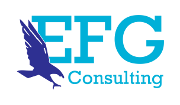Diversification is the soundboard of the 2030 vision, and simultaneously it is the pillar which has underpinned successful, and secure, development of the economy.
The Vision 2030 is specific to the Emirate of Abu Dhabi and encompasses many policies within it, but the most pivotal—and most widely discussed—has been the diversification strand. To achieve a diversified economy does not just mean to increase the number of sectors that make significant contributions to the Emirate’s GDP, although that is important, but it also relies on developing entrepreneurs, the SME sector, and increasing FDI.
Crucially, this also doesn’t mean diminishing the contribution of the oil sector to GDP, which stands at $90 billion annually. In fact, this figure will be maintained, although it will decrease as a percentage of the overall GDP. The continuation of oil receipts will allow the government to move money laterally through the economy to develop other sectors as the Vision roadmap unfolds.
Abu Dhabi’s economy continues to flourish, over 2014 GDP per capita stood at $97,000, with the Emirate’s GDP at $259.4 million—far exceeding the $178.7 million that was anticipated for 2016 when the vision was complied.
The diversification policy has been tested far earlier than expected, as a result of OPEC’s policy to defend the cartels market share and drive out high-cost producers, predominantly the shale producers in North America. Therefore, we have seen how resilient the Abu Dhabi and UAE economy has been with the price of Brent crude at times dropping under $30 per barrel. Effectively, the question posed is whether the UAE economy can continue to grow and function normatively without the same revenue from oil.
The economy has continued on a positive tangent, maintaining growth and adding to the total GDP. Similarly, the Emirate remains on course to reverse the oil to non-oil GDP, having reported a 51% to 49% split, as forecasted in the 2030 Vision. Across the UAE, the contribution of the non-oil sectors to the UAE GDP was 68.6%, this was boosted after the non-oil sectors grew by 8.1%.
At time of the inauguration of the Vision, in 2008, the financial services accounted for 6%, while construction and utilities made up 6%, the remaining key contributors were government services (7%), manufacturing (11%), and mining and energy (59%). Today’s figures compare favorably; finance is a sector that has grown within the Emirate with seven banks headquartered in Abu Dhabi. The sector’s overall contribution stood at 7.2% of GDP equating to one-seventh of the total of the non-oil contribution. Industry contributed 5.5% to the GDP while construction reached 9.6% for the year of 2014.
The World Economic Forum had Abu Dhabi’s tourism contributing $14.6 billion to the economy in 2014, making up 4.1% of GDP, while anticipating that the sector will continue to grow 7.6% YoY. This is a sector that has truly been developed through central planning, especially as other Emirates have traditionally larger tourism sectors by GDP. This sector did not even register as a recognized contributor to the GDP in 2008 and, less than a decade on, is pivotal within this specific framework.
Compared with other oil-rich nations around the region the UAE is in a much more favorable position having implemented their diversification policy years before their neighbors. The UAE ran a deficit of 2.3% in 2015 after revenues fell by 22%. Saudi Arabia ran a budget deficit of $98 billion, equivalent to 15% of GDP—this was supposed to be far higher but a reduction in government expenditure moderated this figure. Oman will run a budget deficit of OMR3.3 billion in 2016, equating to $8.57 billion. Both economies need to make extensive efforts to diversify their revenue base.
This has been compounded by all the Gulf countries dipping in to their Sovereign Wealth Funds. Saudi Arabia took out an estimated $72 billion to buffer their huge deficit. Abu Dhabi is no exception to this policy and has over $1 trillion in assets to utilize in such times. Positively, the UAE will run a zero-deficit budget for 2016.
FONT: thebusinessyear.com

